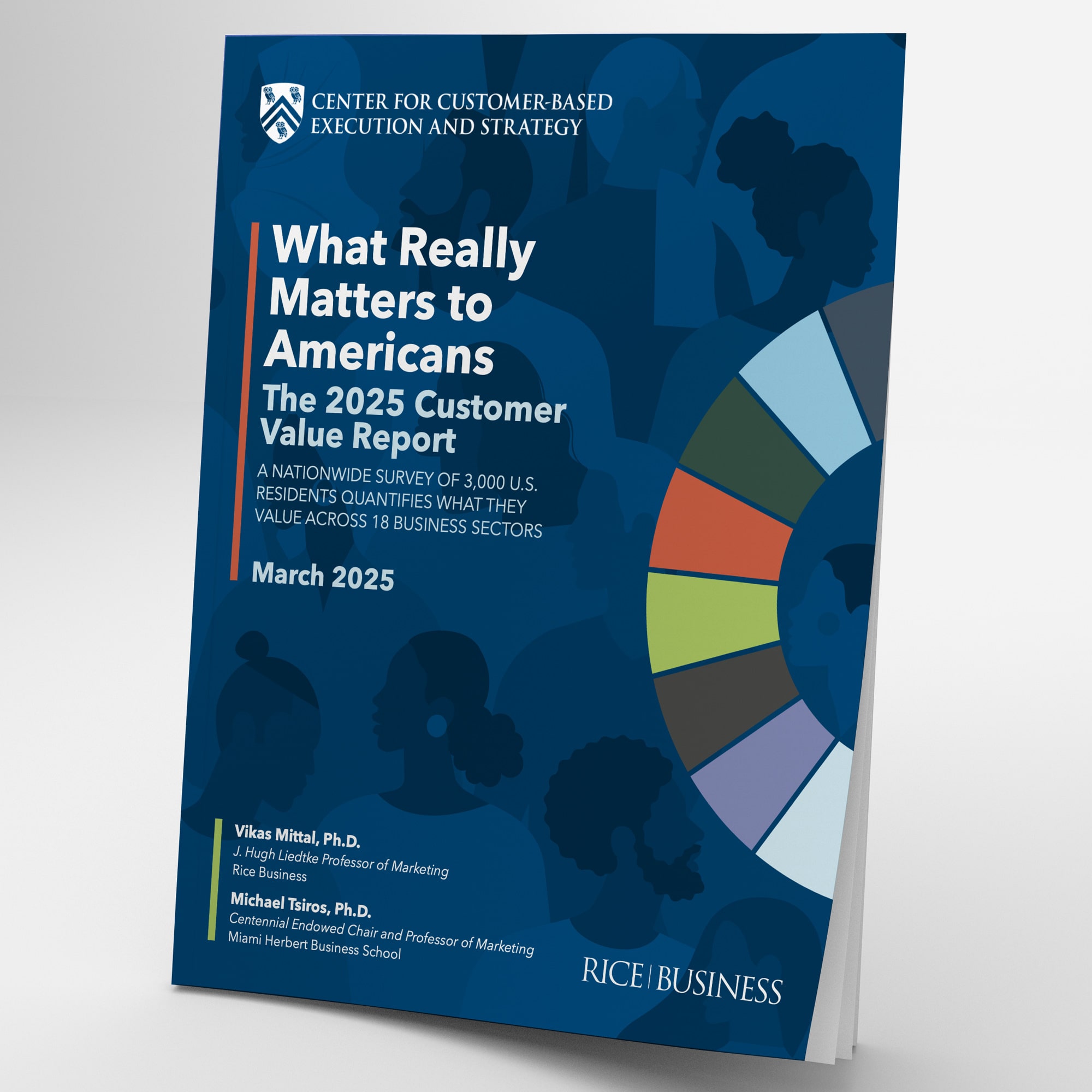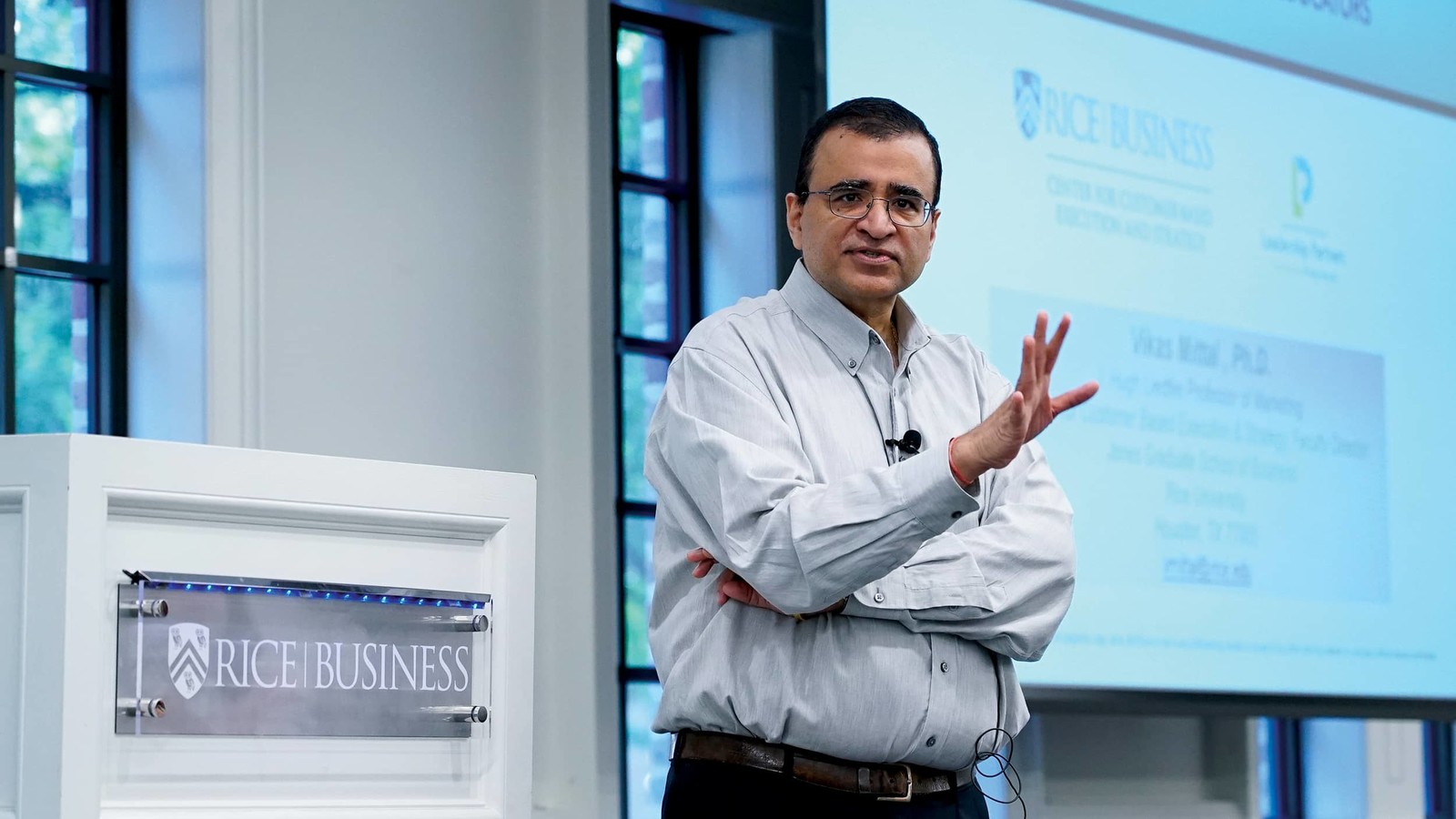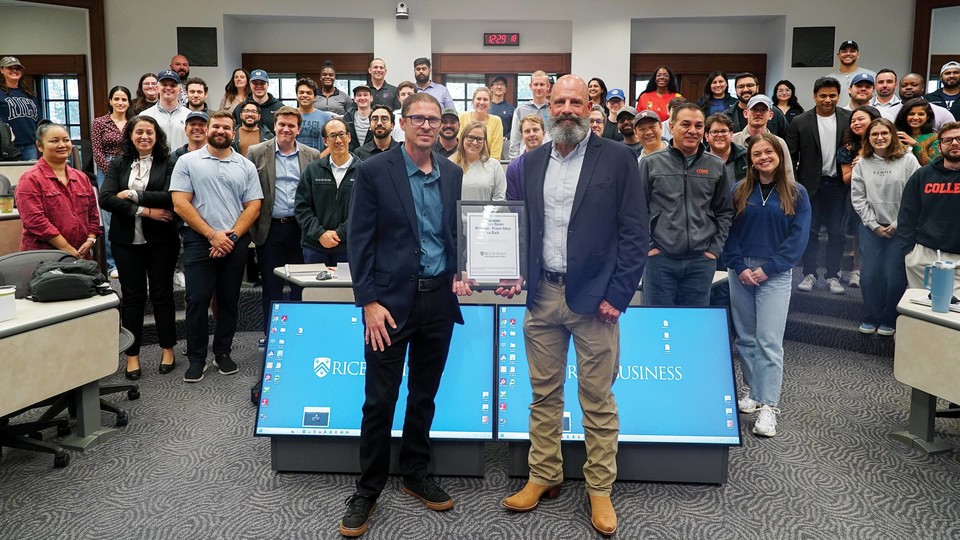
What Customers Really Want

Forget guesswork. New research from Rice Business shows the top drivers of customer value across 18 industries — and why CEOs need to rely on customer satisfaction rooted in data, not intuition, to drive strategy.
Many CEOs claim their strategy is “customer-focused” or “customer-centric,” but few truly are, says Vikas Mittal, the J. Hugh Liedtke Professor of Marketing at Rice Business. Instead, they struggle to pinpoint — then prioritize — what their customer values most.

Without rigorous research on what matters most to their customers, executives tend to rely on guesswork or a gut feeling to drive strategy. It’s a costly mistake that can ultimately dent sales and profits, says Mittal, co-author of a first-of-its-kind customer value research study, along with Michael Tsiros from the Miami Herbert Business School. The first research report out of Rice’s new Center for Customer-Based Execution and Strategy (C-CUBES), “What Really Matters to Americans: The 2025 Customer Value Report” measures the relative importance U.S. residents place on key value drivers like cost, ease of use, safety, sustainability, convenience, and diversity, equity and inclusion, across 18 business sectors.
Mittal, C-CUBES’ faculty director, and Tsiros, a faculty affiliate, speak to Rice Business magazine about the findings and how companies and CEOs can use them to create a science-driven strategy that makes for satisfied, loyal customers.
What was the idea behind the report — how and why did it come about?
VM: Customer satisfaction drives customer retention and sales and is a leading indicator of a company’s cash flow, revenue and stock price. But often, CEOs rely on legacy strategy planning to try to fulfill all customer wishes and demands. They are simply appeasing customers, without the science to truly get to the core of what their customers really value. They need to prioritize their strategy based on the top two or three drivers of customer value. Our goal was to create research that enables CEOs to do just that, especially for small to medium-sized businesses and nonprofits — a core focus of the center.
You uncover top benefits consumers value in sectors from healthcare to financial services to education. What are some of your key findings?
MT: We surveyed a representative sample of 3,000 U.S. residents from ages 18 to 75-plus. The sample was pretty balanced across gender, income and political party. For many categories, safety turned out to be a very strong value-driver — that may not have been the case pre-Covid. For example, safety was the top driver of customer value for the K–12 education, financial services, automotive and airline industries. Meanwhile, for all four of these sectors, diversity, equity and inclusion policies are the least consequential driver. Also notable is that sustainability and carbon impact rank among the least important drivers of customer value for the automotive and energy sectors.
What do you make of these findings?
VM: Consumers are very practical and wise. They want a reasonably good offering that’s affordable, and they value convenience. The wrong way to read the report is that customers don’t care at all about DEI and sustainability. They do. But they care about affordability, quality and convenience a lot more. These findings are a huge wake-up call for CEOs that likely have not considered — in a rigorous, science-backed way — how to prioritize these benefits in their organizational strategy.
How can companies and executives use the report to better serve their customers and help to boost the bottom line?
MT: The report can be a conduit for CEOs to change their mindset and choose to follow science, and not gut-feel or intuition. Then, they can figure out which of the industries in the report they fall into and check that their company is at least broadly aligned with the drivers. If not, they’ve got some work to do. First, you have to excel on the top one or two value drivers. Then you can fulfill those additional things customers may care about, but that aren’t the main value drivers. After making science-backed changes to strategy, companies need to measure impact by linking customer value to financial outcomes. We hope these findings inoculate senior decision-makers so they’re not trend-chasing, but instead they’re strengthening their focus on customer value.
What’s next for the Center for Customer-Based Execution and Strategy?
VM: Our goal is to run this study every other year. We’re also planning a new study that looks at the drivers of employee value. The center hosts regular events for leaders of nonprofits and for-profits. On Nov. 18, the center will host a customer-based strategy symposium at the Ion in Houston. We have a great lineup of speakers who will detail how they’ve used this customer-centric, science-backed business approach to strengthen their organizations.


